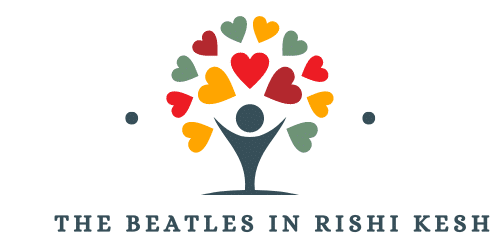Welcome, dear readers! Today, we’re delving into a topic that combines our shared passion for sports and our collective commitment to fostering community bonds. As we explore the fascinating intersection of sports and community engagement, we’ll also touch on the numerous ways in which sports can ignite civic participation and community development.
The Power of Sports: More Than a Game
Before we dive into the specifics, let’s take a moment to understand the broader context. When we speak of sports, we aren’t merely referring to the games played in stadiums or watched on television. We’re discussing a social phenomenon that has the power to unite people, instill a sense of identity, and create a platform for positive change.
A découvrir également : How do athletes use sports science to prevent and manage overuse injuries?
Indeed, sports have the unique ability to transcend boundaries. Whether it’s the thrilling spectacle of the Olympic Games, a national championship, or a friendly neighbourhood match, sports can bring together people from diverse backgrounds, fostering a sense of communal identity and shared purpose.
Fostering a Sense of Community through Sports
When a sport is played, it isn’t just the players or the spectators; it’s the entire community that gets involved. From the local shopkeepers to the enthusiastic volunteers, everyone plays a part in creating the electrifying atmosphere that surrounds sports events.
Avez-vous vu cela : How do sports organizations use virtual reality for athlete rehabilitation and physical therapy?
Research has shown that participation in sports, whether as a player or spectator, can enhance people’s sense of belonging to a community. A landmark study by the Australian Sports Commission found that adults who engage in sports have significantly higher levels of social capital than those who don’t. This includes increased community participation, healthier social networks, and a greater sense of community identity.
Furthermore, sports have been identified as an effective tool for rural development. By creating opportunities for participation and engagement, sports can foster social inclusion and cohesion in rural areas, often characterized by isolation and limited resources.
Sports and Health: Boosting Public Health through Physical Activity
While the social benefits of sport are well recognized, its potential to improve public health is equally significant. Regular physical activity is crucial for maintaining good health, and sports provide an enjoyable and engaging way to encourage people to stay active.
According to a report by the World Health Organization, physical inactivity is one of the leading risk factors for global mortality. Encouraging participation in sports can help combat this public health issue, promoting health and wellness at both individual and community levels.
Moreover, sports-based health initiatives can be particularly effective in reaching populations that are typically less engaged in health promotion activities. By offering a fun and social way to stay active, sports can motivate individuals to adopt healthier lifestyles, ultimately contributing to improved public health outcomes.
The Role of Organisations in Promoting Sports
Organisations, both national and local, play a crucial role in promoting sports participation and community engagement. From grassroots clubs to national associations, these organisations provide the structure and support necessary for sports to flourish in communities.
For instance, community sports organisations often work to make sports accessible to all, regardless of age, gender, or ability. They organise events, run training sessions, and provide resources that encourage people to get involved. Moreover, they often partner with local schools and community groups to reach a wider audience and foster a love for sports among the younger generation.
Meanwhile, national sports organisations can influence policy, secure funding, and raise awareness on a larger scale. Their work often complements the efforts of local organisations, ensuring that sports remain a priority on the public agenda.
From Sports Engagement to Civic Participation
The link between sports engagement and civic participation may not be immediately apparent, but a closer look reveals numerous connections. Participation in sports can cultivate skills and values that are directly applicable to civic involvement.
Sports teach teamwork, discipline, and respect for rules – all of which are crucial for functioning democracies. Moreover, being part of a sports community can increase awareness of local issues and stimulate interest in community affairs.
In this way, sports serve as a springboard for civic participation. By creating a vibrant, engaged community of sports enthusiasts, we can foster a culture of active citizenship where everyone has a stake in their community’s future.
For us, the power and potential of sports go beyond the field. As the Olympic creed states, “The most important thing is not to win but to take part.” And it’s in that spirit of participation and community that we can harness the power of sports to build healthier, more engaged, and more inclusive communities.
Enhancing Human Rights and Social Inclusion through Sports
In the broad spectrum of ways in which sports foster community engagement, the promotion of human rights and social inclusion cannot be overstated. Sports, through their very nature, embody the principles of fair play, respect, and equality. These principles are not only essential to the game but also to the fabric of any democratic society.
Sports have a proven track record of breaking down barriers and promoting social inclusion. Think of the Paralympic Games, an event that shatters stereotypes and challenges misconceptions, providing a powerful platform to champion the rights and potential of individuals with disabilities. In the same vein, initiatives promoting gender equality in sports, whether at grassroots or professional levels, contribute to challenging and changing societal norms.
Community sports, in particular, can play a pivotal role in fostering social inclusion. By creating safe and inclusive spaces, these sports activities can bring together people of different backgrounds, ages, and abilities, facilitating mutual understanding and respect. They can offer young people, especially those from marginalized communities, the opportunity to engage positively with their peers and their environment.
All these dynamics are instrumental in promoting human rights. Through sports, individuals learn to respect each other’s rights, appreciate diversity, and uphold the principles of fairness and justice. It’s in this way that sports can drive a more inclusive and respectful community, furthering human rights even beyond the sporting arena.
Sports Facilities and Community Development: A Sustainable Approach
Sports facilities are more than just bricks and mortar; they are community assets that can significantly contribute to local development. From local parks to state-of-the-art stadiums, these facilities are crucial in providing access to sports and physical activity, thereby promoting public health and social cohesion.
However, building and managing sports facilities requires a sustainable approach that goes beyond merely providing a venue for sports activities. From planning and design to maintenance and management, every aspect should be geared towards meeting the diverse needs of the community, fostering environmental sustainability, and ensuring long-term viability.
The management of sports facilities should involve the community at every stage, ensuring their needs and aspirations are reflected in the design and use of the facilities. This participatory approach, often referred to as “sport management”, can enhance the sense of community ownership and stewardship, leading to better maintenance and utilization of the facilities.
Moreover, sports facilities can serve as hubs for community engagement and development. They can host a variety of activities and events, from sports tournaments to community gatherings, thereby fostering social interaction and cohesion. They can also provide opportunities for local employment and skills development, contributing to the local economy.
By adopting a sustainable approach to sports facilities management, we can ensure that these assets continue to benefit our communities in the long run, promoting sports participation, community development, and public health.
Conclusion: Harnessing the Power of Sports for Community Engagement and Civic Participation
Indeed, sports are far more than just games. They are powerful social tools that can foster community engagement, promote public health, and drive civic participation. From building social capital and fostering social inclusion to promoting human rights and developing sustainable sports facilities, sports have the potential to make significant contributions to community development.
As we continue to explore and harness the power of sports, we need to remember that the success of any sports initiative is ultimately determined by the community’s engagement and participation. As such, it’s imperative that we continue to champion inclusivity, accessibility, and sustainability in all our sports endeavors.
In the words of the late great Nelson Mandela, “Sport has the power to change the world… It speaks to youth in a language they understand. Sport can create hope where once there was only despair.” It’s with this understanding and hope that we move forward, leveraging sports as a vehicle for positive change in our communities.
















